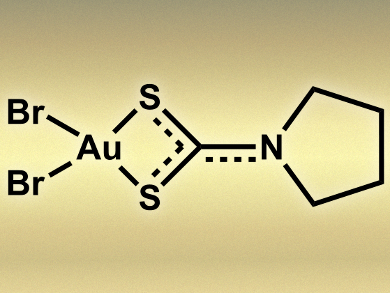Metal-based compounds have been used as chemotherapeutic drugs since the discovery of the cytotoxic properties of cisplatin (cis-[Pt(NH3)2Cl2]) in the late 1960s. Since then, it is of great interest to find drugs with a better chemotherapeutic index in terms of toxicity–activity ratio.
Dolores Fregona and colleagues, University of Padova, Italy, have synthesized two gold(III) pyrrolidinedithiocarbamates (PDT) with the general formula [AuIIIX2(PDT)] (X = Cl, Br). In vitro cytotoxicity was tested on HeLa (cervical cancer), HCT116 (colon neoplasia), SAOS (osteosarcoma), and MEF-NF1−/− (immortalized primary embryonic fibroblast) cancer cell lines.
The bromide derivative was more effective than the chloride one in inducing cell death for several cancer cell lines. The cell death-inducing mechanisms were explored by investigating whether the compounds affect redox equilibrium or influence the permeability transition pore (PTP) activity, a mitochondrial channel whose opening leads to cell death. [AuIIIBr2(PDT)] (pictured) induced oxidative stress with effects on the PTP activity.
 Gold(III)-pyrrolidinedithiocarbamato Derivatives as Antineoplastic Agents,
Gold(III)-pyrrolidinedithiocarbamato Derivatives as Antineoplastic Agents,
Chiara Nardon, Federica Chiara, Leonardo Brustolin, Alberto Gambalunga, Francesco Ciscato, Andrea Rasola, Andrea Trevisan, Dolores Fregona,
ChemistryOpen 2015.
DOI: 10.1002/open.201402091


